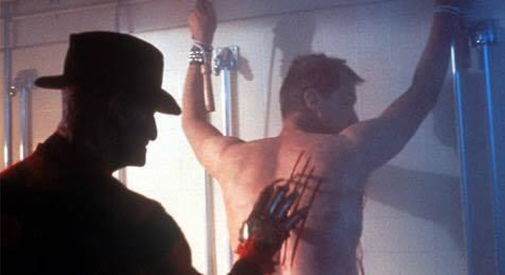
I was so excited about this move the other day I didn’t say anything about the actual move! Here is the actual move:

Mechanically, a hit mostly hands narrative control to the target of your move, the person you’re Turning On. This obviously has a neat function as a quasi-safety tool or consent check-in; the person you’re turning on is the one who decides what happens. It also ensures that people mostly roll Turn Someone On for its own sake, because they’re messy teenage monsters, not instrumentally.
It’s interesting to me that the move text doesn’t say something like, “On a hit, they’re turned on”. It kinda skips over that! I guess the possible reactions imply they’re into it but like I have definitely done all three of these things to someone I wasn’t into who was trying badly to pick me up. Who hasn’t? I guess in MH, being turned on just is this exchange of reactions and Strings.
Strings, which I skipped talking about the other day, are an in-game currency that represents the emotional power one character has over another. Here, a 10+ gets us both that emotional power and a reaction, whereas a 7-9 gets us one or the other. I think this is an artful arrangement: if someone really turns us on, fucking them isn’t enough to clear that emotional hold, but if we’re only kinda into it, we can just fuck them and be done with it. (I know fucking isn’t the only option here, but still.) And deciding not to fuck them can mean that emotional power is more enduring. Emotional connection isn’t necessarily a part of our sexualities, but sometimes it is, and the ‘sometimes’ is as random as a dice roll. This seems to me as core to how “Monsterhearts understands sexuality” as the idea we don’t decide who or what turns us on (will come back to this).
I’m not sure how I feel about ‘I get embarrassed and act awkward’ as an option here. It’s clearly consistent with teen sexuality, in both real life and fiction. But the other two reactions point more strongly to new directions for play, continuing the story: a new hook up that probably triggers a sex move, or following through on that promise with whatever new scenes and dangers that implies. Acting awkward doesn’t necessarily advance the fiction as strongly, and can kinda block things, in my experience. There’s a kind of MH player who wants to play a shy, awkward nerd and it can be hard to draw them out; this option gives them too much space to retreat and hide, for my taste. I’d like something more demonstrative.
But this option is necessary for the structure of the move, because for the turned-on party to have the agency Alder wants (“How you react to that is up to you,” Alder writes; this is essential for the move to work in a consensual way), they have to be able to say, basically, ‘you don’t get anything you want’. I would like it to be a bit more demonstrative – maybe ‘you make a scene’ rather than ‘act awkward’. But you often get that narrative juice in play anyway. (It occurs to me that maybe you could often let this move snowball, for the person acting awkward, by making them roll to Run Away; I don’t know if I’ve ever done this.)
Anyway, I think this move’s exchange of agency is interesting. Only after you roll a hit, they decide. You can imagine a version of this move where the other person makes their decision before the roll, with a trigger like “When you turn someone on, ask the other person if they could be receptive to what you’re doing. If they are, roll with Hot.” This would make the dice roll itself a little more feral because you could take out the ‘I get awkward’ option; you could even go for something as strong as ‘on a hit, you give yourself to me’, because you’d have placed consent somewhere else in the move.
But this would wipe out what Alder calls here “the heart of how Monsterhearts understands sexuality… We don’t get to decide what turns us on, or who”. Letting the dice decide that is an absolutely brilliant piece of game design, and of game design as social commentary. People wanna call trad games Simulationist because they supposedly simulate a world with their mechanics, but here’s MH just saying “let’s simulate something else”. Let’s be simulationist about weird unexpected horniness. Forget combat, we are simulationists of everyone’s innate bisexual potential.
One thought on “Turn Someone On (part two)”